Vocation takes cultivation
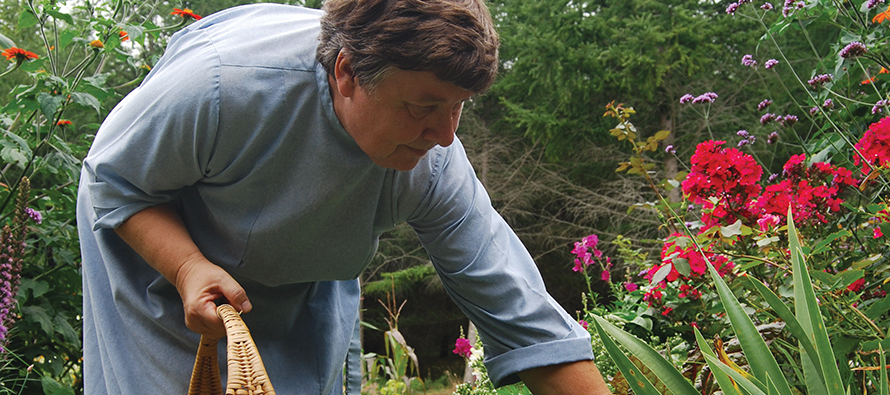
Image: Sister Elizabeth Wagner works in the garden at Transfiguration Hermitage, a monastic community in Windsor, Maine.
I grew up on a small farm in Connecticut, so I guess gardening is encoded in my DNA. My paternal grandmother, my namesake, had a reputation as a miraculous gardener and a whiz at grafting fruit trees. She also entered a monastery as a young woman, although she then left to bring up younger siblings after her parents died. So perhaps monastic life is also encoded in my DNA.
But as a child, I didn’t see gardening or religious life in my future. I was raised Protestant, nominally—church on Christmas and Easter and occasional attendance at Sunday school, which I liked, most of the time.
In my last year of high school, knowing I was headed for college but with my future a blank after that, I discovered Catholicism and contemplative life, both at the same time. In one fell swoop, I fell in love. Yet it took several years before I was ready to embrace my faith and become Catholic. Once in, I knew right away that a monastery was for me. And so I entered one, but eventually it became clear that I hadn’t gone about it the right way. I still needed and longed for contemplative life, but somehow I had misunderstood what it was about.
When I was fresh out of college, I thought that having all the answers was what mattered. If I did everything correctly, prayed a lot, and made sure I had all the “exercises” of religious life down pat, then everything would be fine. I’d become a saint, and religious life would go well. And no doubt everyone would clearly recognize my holiness. Right?
Well, not exactly. It took many years to change my thinking. And that’s where gardening came in.
Digging deep
A vocation is about life, and so is a garden. In my early attempt to live out of my head and my misunderstood dreams, I had cut myself off from life itself, from God’s life, which comes to us in so many forms—in beauty, in nature, in friendship, and support.
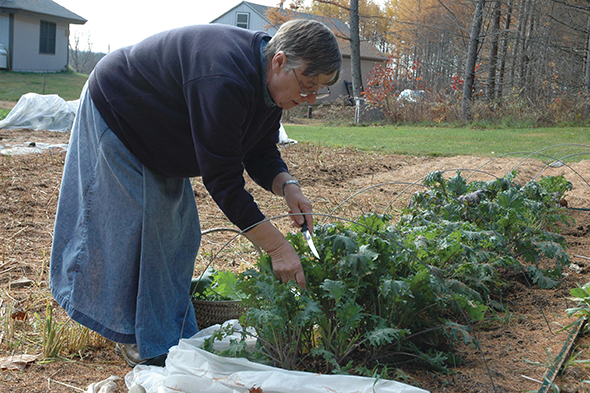
I felt a strong desire to use my hands and physical energy and creativity, so I planted a garden and worked at tending it, and I found God there. A garden is real, not an abstract notion. I learned from gardening that I had to pay attention to reality, not my daydreams, learn from it, give it what it actually needs, not what I think it should need. The more I gardened, the more I relinquished my idealizations of religious life and the more I surrendered to the real religious life to which I was called, and I suddenly began to find God everywhere.
Bearing fruit
There are many kinds of gardens, and nearly unlimited kinds of plants, but we need to grow the type of garden that will flourish in the type of climate and soil we’ve been given. When we get it right, it’s beautiful and fruitful. Same goes for vocation. A vocation is not about growing in isolated perfection but producing yield for others. It calls us into service. As with plants, this can take many different forms: service to our families, our communities, the poor and needy; service of prayer and sacrifice for the world. When we become the creation in God’s garden that we were meant to be—a difficult getting-your-hands-dirty process—we find peace and fulfillment and joy.
When we plant a garden, we must think about what we want from it and how to go about it, but it really helps to ask God to show us the best way. When I built my first hermitage, I didn’t know how to tend the landscape and what sort of garden to plant, so I waited through the first winter, trusting God would reveal to me what to do when it was time. And sure enough, it simply became evident to me one day, and in the spring, I created terraced gardens blending the cultivated terrain at the top of the hill into the wild land below.
It’s the same with our calling. We need to think about it, dream about it, talk to the right people about it—and pray to God about it. That’s the most important part. Ask God to help us figure out what suits our needs, our aptitudes, our desires. And ask God what he wants. Ask him how we are to serve in his garden, which is the struggling, wounded, hurting world.
God speaks to us in many ways, but I believe that the best way to hear God is in a garden. After all, God created the first humans in a garden, faced death from a garden, and rose again from a garden. Perhaps Mary Magdalene was not so far off when on that first Easter morning she mistook Jesus for a gardener (John 20:15).
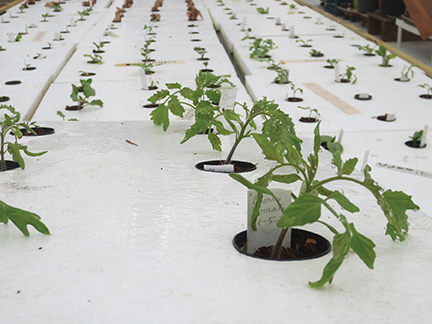
Benedictine Sisters of Florida at Holy Name Monastery
The Benedictine Sisters in St. Leo, Florida raise tilapia fish and garden vegetables using aquaponics—the marriage of aquaculture (raising fish) and hydroponics (the soil-less growing of plants). In other words, waste generated by the fish is changed into nutrients that then flow through a series of pipes to vegetable roots that are set on grow beds.
“This is my ministry, my reason to be, and all to the glory of God,” says Sister Miriam Cosgrove, O.S.B., who directs the aquaponics program. “This is not only a delightful, fun, and satisfying ministry, but also in keeping with our commitment to feed world hungers.
“Aquaponics is a better use of God’s earth and water and will enable us to produce the healthy food we want to consume as well as to become a sustainable monastery,” she says. “We hope in the very near future to provide food for those in need.”
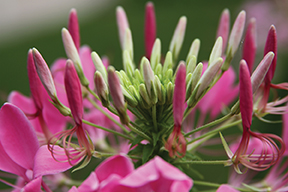
Crosier Fathers and Brothers
The garden of the Crosier community of Onamia is the pride and joy of Father Tom Carkhuff, O.S.C., who plants and maintains it each year.
Located at the gateway to the beautiful Lakes Region in central Minnesota, this Crosier community, established more than 100 years ago, serves as the formation house for new entrants. Crosier fathers and brothers combine contemplative routines with a shared apostolic life and serve as parish priests, retreat leaders, and jail ministers.
Benedictine Sisters of Chicago at St. Scholastica Monastery
The Benedictine Sisters of Chicago are a monastic community living in the heart of an urban environment. They grow flowers and vegetables as well as grapes in a small vineyard behind the monastery. They also share small plots of land with apartment-dwelling neighbors to tend gardens of their own.
According to the sisters, “Scripture calls each one of us to be stewards of God’s creation. While not all our sisters are gardeners, all benefit from the beauty surrounding the monastery. Seeing beauty creates the longing to share that beauty with the world. It is the same cycle of how God’s love grows—when we experience God’s love, we are eager to share it with the world. We invite all to visit the monastery to savor God’s creation and explore how to spread God’s spirit in the world.”
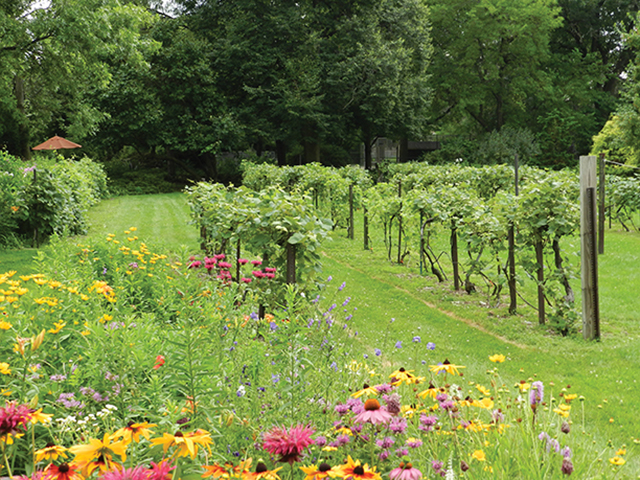
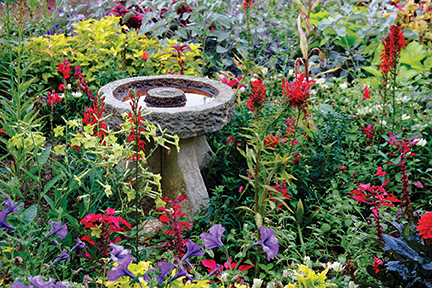
Trappist monks at St. Joseph's Abbey
Trappist monks live a contemplative life of prayer and work. St. Joseph’s Abbey in Spencer, Massachusetts is open every day for all who wish to visit and pray with them.
The monks say, “We care about beauty. Our liturgy is beautiful. Our buildings are beautiful. The products we make to support ourselves are beautiful. As monks our vow of stability deeply roots us in the place we live, and the quality of our life manifests itself in our surroundings. Gardens are just a natural consequence of the love of our life.
“The brothers at St. Joseph’s Abbey have gardens scattered in a dozen places around the monastery. The gardens are also not confined to a single idea of what a garden should be. Sometimes they are just a simple stand of tiger lilies or the reliable rows of our apple orchard. At other times the garden is a profusion of color, shape, and texture that constantly changes if one keeps a close eye on it throughout the warm months. Perhaps the brothers’ favorite garden is the one where sweet corn, melons, and heirloom tomatoes grow. From that garden the work of our hands and the fruit of the earth become the beauty within us.”
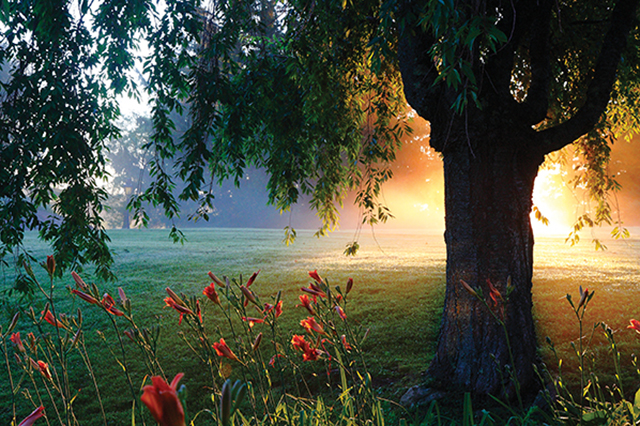
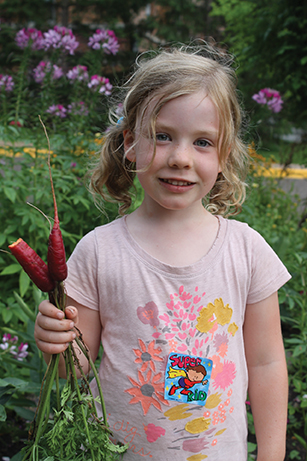
Sisters of St. Joseph of Carondelet
Celeste’s Dream Community Garden is a program of the young-adult spirituality and vocation ministry of the Sisters of St. Joseph of Carondelet (C.S.J.) in St. Paul, Minnesota. The garden provides a place to teach and share organic growing methods, create common ground, and invite people into the C.S.J. mission and community. Through the garden, the sisters nurture intergenerational relationships. Gardening together as a group, they share their work and harvest with one another and others. They also donate part of their bounty to a C.S.J. ministry and a local food shelf.
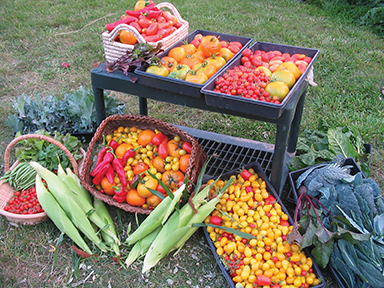
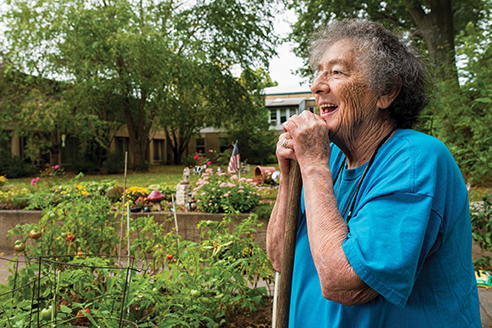
Grey Nuns of the Sacred Heart
For the Grey Nuns of the Sacred Heart, eco-spirituality ties together their Catholic faith and concern for the earth—we are called to recognize, appreciate, celebrate, and take care of the cosmos as a place of God’s continuing self-revelation and creation.
Avid gardener Sister Constance Welsh, G.N.S.H. has a deep respect for the earth as a gift from God. After many years in elementary education, she became the groundskeeper at the motherhouse in Yardley, Pennsylvania. “There are many places on Earth where you can feel the presence of God. In a garden, God is present in the soil, in the flowers, in the weeds, even in the slugs and the moles. A garden is as holy as a chapel!” she says.
Cistercian monks at the Abbey of Our Lady of New Clairvaux
The Abbey of Our Lady of New Clairvaux in Vina, California is home to a community of Cistercian monks who strive for a balance of prayer, hospitality, work, study, and sustainable stewardship of resources in simplicity and openness for the glory of God. While much of a monk’s time is spent in lectio divina, a form of scripture meditation, Brother Guerric Llanes, O.C.S.O. says that the natural surroundings at the abbey also put the monks directly within the “gardens of the scriptures,” to use the words of Blessed Guerric of Igny, a disciple of Saint Bernard of Clairvaux, the founder of the Cistercian order.
Llanes continues, “While quietly picking grapes during a summer harvest, my mind finds a leisurely pause, and I recall the words of Christ: ‘Consider the lilies of the field, how they grow.’ And then I know I can put all my worries to rest and simply bask in the sweet Spirit of His Word.”
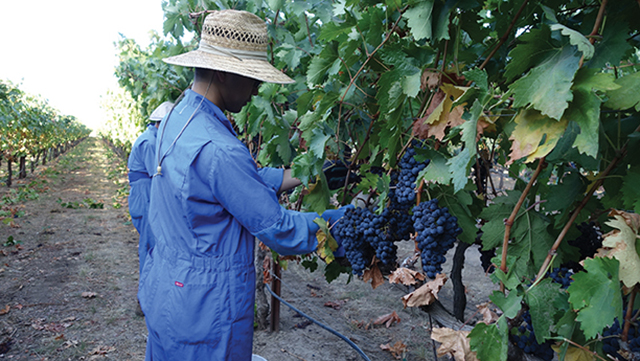
View more religious community gardens here.
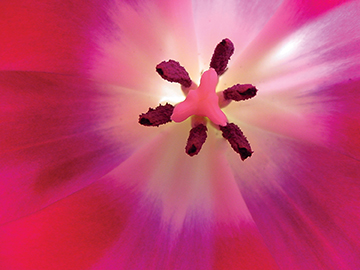
Petal a path to prayer
Flower photographer Sister Elizabeth Thoman, C.H.M. created the collection “Healing Petals” as a spiritual ministry to the sick.
Flowers are “sunshine, food, and medicine to the soul,” observed American botanist Luther Burbank a century ago.
Flowers can also open a path to prayer for cancer patients or anyone in physical, emotional, or spiritual pain, says Sister Elizabeth Thoman, a Sister of the Humility of Mary in Davenport, Iowa, and the creator of “Healing Petals: Images for Prayer & Reflection,” a collection of photographs of flowers in full bloom.
“Healing Petals” combines color, lighting, and composition to draw viewers into each flower with the intention of touching the soul and facilitating prayer.
Personal experience
Thoman discovered the healing power of images as she was recovering from breast cancer a few years ago. “Cancer is not just a physical disease; it also takes a spiritual toll,” she explains. “When I started chemo, friends warned me about its many side effects—losing my energy, losing my appetite, even losing my hair. But nobody warned me about how hard it might be to pray.” Pray with words, that is.
“Chemo-brain is real,” she says. “Words become a jumble and it’s hard to concentrate. Just when I needed prayer the most, it eluded me.”
One day Thoman picked up her camera and started taking photographs of flowers in her backyard—roses, lilies, pansies, petunias. “The close-up allowed me to see right into the heart of each flower. Wow! My first discovery was that the act of photography itself is a prayer.”
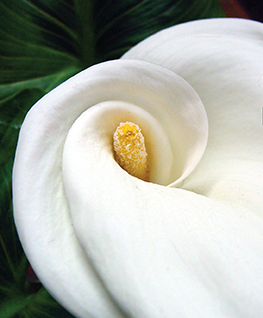
Prompting prayer
As her inventory of images grew, so did her admirers. She now works primarily with hospitals and medical facilities to install flower photos in patient rooms and emergency care centers.
“Serious illness can be a transformative experience for many people,” she says. “Patients confront their own limitations, readjust life priorities, and reach out for spiritual nourishment.” But when you are very sick or in pain, traditional prayer can be difficult. “Praying with a visual prompt, like a beautiful flower photograph on the wall in your hospital room, can provide a profound and positive experience with God.”
She believes that “Healing Petals” is a “ministry of spiritual photography” because of its emphasis on prayer. In addition to taking all the photographs, she has written a series of “prayer prompts”—reflective questions—to accompany her images.
Her hope is that her photographs help others connect to God. “We know from research that images bypass the rational brain and speak directly to the heart,” she says. “If I spend time gazing at a beautiful flower, even a photograph of it, my spirit comes alive! Prayer is possible again.”
Related article: vocationnetwork.org, “Created in community,” Vision 2011.

Sister Elizabeth Thoman, C.H.M. was the founder of Media & Values magazine, which she helmed for 40 years, in California and a pioneer in the media literacy education movement in the United States. She is now the membership coordinator for the Congregation of the Humility of Mary in Davenport, Iowa.
Tags
Related
- Literature makes good people better
- Icons: An age-old entrée into the divine
- Religious communities have deep and diverse roots
- Scientific wonder is God’s handiwork
- Respite and renewal brought to you by religious communities
- Lives that lead to God: Biographies and memoirs
- Religious orders aid and advocate for migrants
- Rural religious take to the highways and byways
- Divine design: The holiness of place
- More prayer spaces of religious communities Read More
Most Viewed
- Find your spirituality type quiz
- Questions and answers about religious vocations
- Celibacy quiz: Could I be a nun? Could I be a brother? Could I be a priest?
- Resources for older discerners or those with physical and developmental differences
- About Vocation Network and VISION Guide


